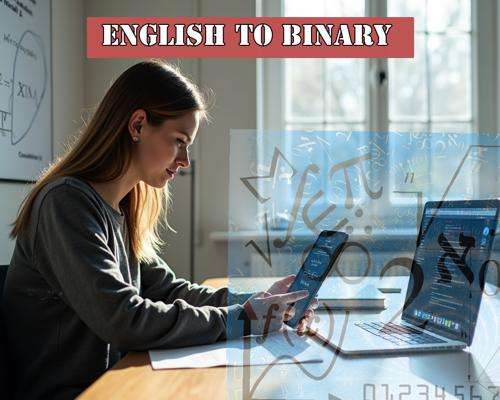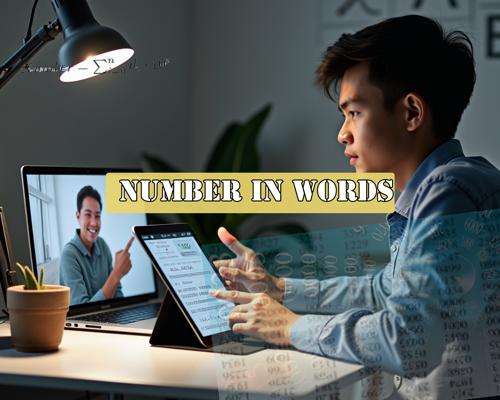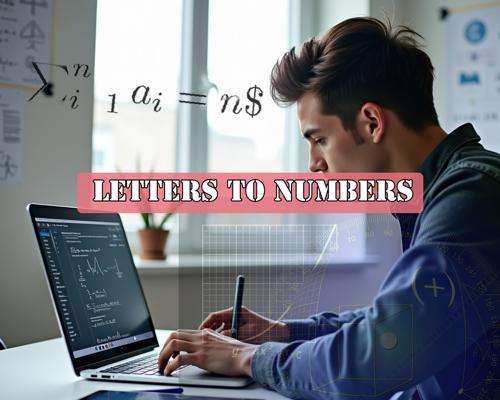English to Binary Translator
The objective of this calculator is to convert and English text you provide into binary code. Ultimately, it can be
any sequence of letters/characters that can be provided.
This calculator works by first converting to ASCII numeric code, and the converting those numeric codes (could be
decimals or hexadecimals) into binary.
What is Binary Code?
Binary code is the fundamental language of computers based on a numerical encoding using base 2, consisting of only two digits: 0 and 1.
These digits, known as bits, are used to represent all data and instructions in computing.
Each bit can be interpreted as a state of either "on" (1) or off (0), which allows computers to process information through electrical signals, using
microprocessor, which are the corner stone of modern computers.

How to Convert English to Binary?
Converting English text to binary involves translating each character of the text into its corresponding binary representation.
This involves using a specific letter to number conversion. Most commonly, the ASCII encoding will
be used for this conversion. These are the steps to follow:
- First, you need to find the ASCII value of each character in the text.
- Then, convert that ASCII value into an 8-bit binary number.
- Combine these binary numbers to form the binary representation of the text.
A special token needs to be used to mark the separation between letters. The one used most frequently is the blank space " ".
ASCII to Binary Conversion Explained
ASCII (American Standard Code for Information Interchange) assigns a unique numerical value to each character, with values ranging from
0 to 255, corresponding precisely to \(2^8 = 256\) possible values. Here are the steps to convert ASCII to binary:
- First, you identify the ASCII value of the character (a number from 0 to 255).
- Then, you need to convert this decimal number into binary using the following steps:
- Divide the number by 2 repeatedly, noting the remainder each time.
- Then, you need to read the remainders from bottom to top to get the binary representation.
Binary Alphabet: Understanding Each Character
Using basic letter to binary conversion, we find that each letter in the English alphabet has a unique binary code when represented in ASCII.
Here are some examples:
- A: 01000001
- B: 01000010
- C: 01000011
Although this could provide some basic level of ciphering, this type of encoding is easily breakable for which reason any serious
cryptographic scheme needs to use a whole lot more sophisticated approach.

The Use Binary in Computers
Binary is used in computing because it is the natural way to represent the "on" and "off" states that is the natural way electronic components
use to operate. Indeed:
- It's simple for electronic circuits to distinguish between two states (on/off).
- It allows for efficient data storage and processing.
- It's the foundation for all digital logic operations.
The fact that our modern computer use electronic signals to distinguish states makes the binary encoding the natural language for our
computers. This is not written in stone, though, as nowadays there a not so timid advent of quantum computing, where 0-1 bits
are rendered obsolete.
Binary to Text: The Reverse Process
Naturally, we can do the backward process of taking a binary number and assign a letter to it. Converting binary back to text involves
the following:
- Grouping the binary digits into 8-bit chunks (called bytes).
- Converting each chunk back to its ASCII value.
- Matching the ASCII value to its corresponding character.
Observe that here we are truncating bits to chunks of 8, so that the numeric code ranges from 0 to 255 (1 - 256). We could use more
bits, but we would need a larger set of encoded characters, like Unicode.
Common Binary Codes and Their Meanings
Here are some common binary codes and what they mean:
- 01001000 01100101 01101100 01101100 01101111 00100001: This translates to "Hello!"
- 1010111: This is the binary representation of the letter 'W'.
- 01011001: This is the binary for the letter 'Y'.
What Does 01001000 01100101 01101100 01101100 01101111 00100001 Mean?
This sequence of binary digits translates to "Hello!" in English. Each 8-bit group represents a character in ASCII.
Example: What Does 1010111 Mean in Binary?
The binary number 1010111 is a bundle of 8 bits, and it corresponds to "87" in decimal, represents the letter 'W' in ASCII.
What Does 01011001 Mean?
Similarly, the binary sequence 01011001 corresponds to the letter 'Y' in ASCII, because 01011001 corresponds to "87" when written in base 10.

Binary to Decimal Conversion
To convert binary to decimal:
- Start from the right, assign powers of 2 to each bit (0, 1, 2, 4, 8, 16, etc.).
- Multiply each bit by its corresponding power of 2.
- Sum these values to get the decimal number.
Binary to Hexadecimal Conversion
Another very useful encoding in computing the hexadecimal set. It is used as a way to have a more compact way of expressing bytes
by using two hexadecimals to represent them.
Converting binary to hexadecimal involves:
- Grouping the binary digits into sets of 4 bits.
- Converting each group to its hexadecimal equivalent.
More Conversion Tools
For further exploring in the realm of digital encoding, our Binary Translator
can help you convert text to binary and vice versa, providing a deeper understanding of how computers interpret data. Then, also
if your work involves numerical data, converting numbers into words can be quite useful, especially in contexts where readability is key;
for this, you might find our Number to Words tool invaluable.
Another fascinating area of conversion involves transforming letters into numbers or vice versa.
Whether you're working on cryptographic puzzles or simply curious about how alphabets can be represented
numerically, our Letters to Numbers calculator can be an engaging tool to explore these concepts further.